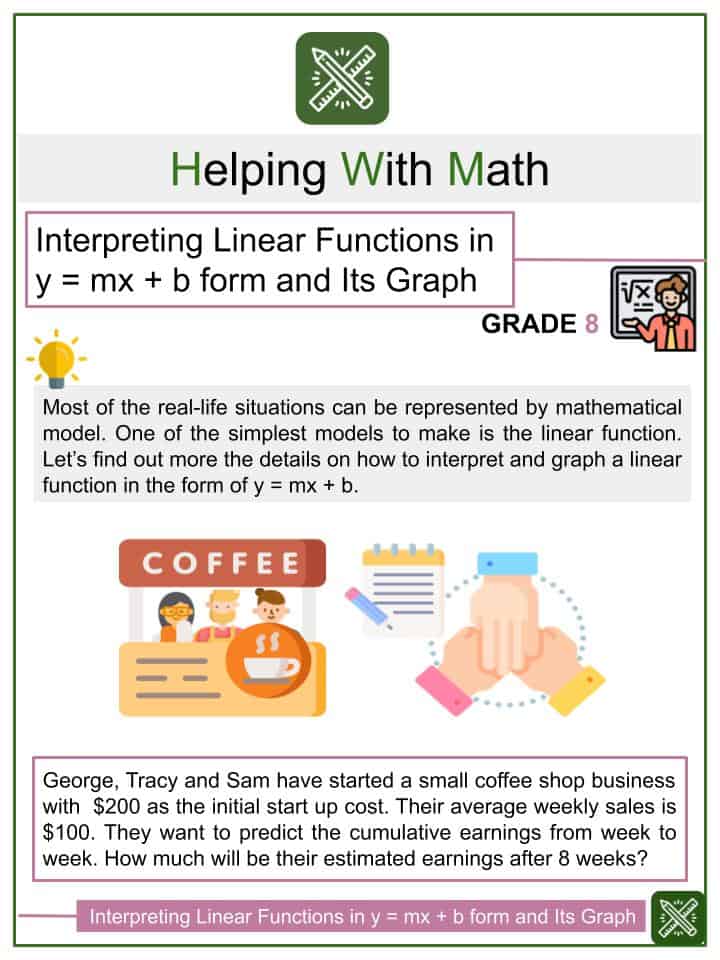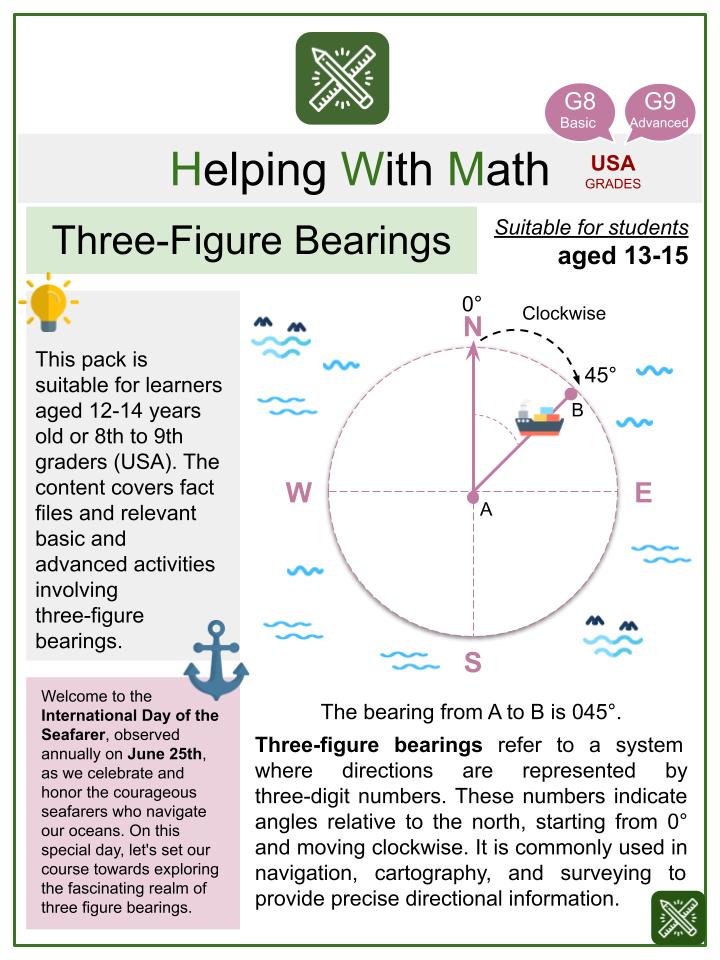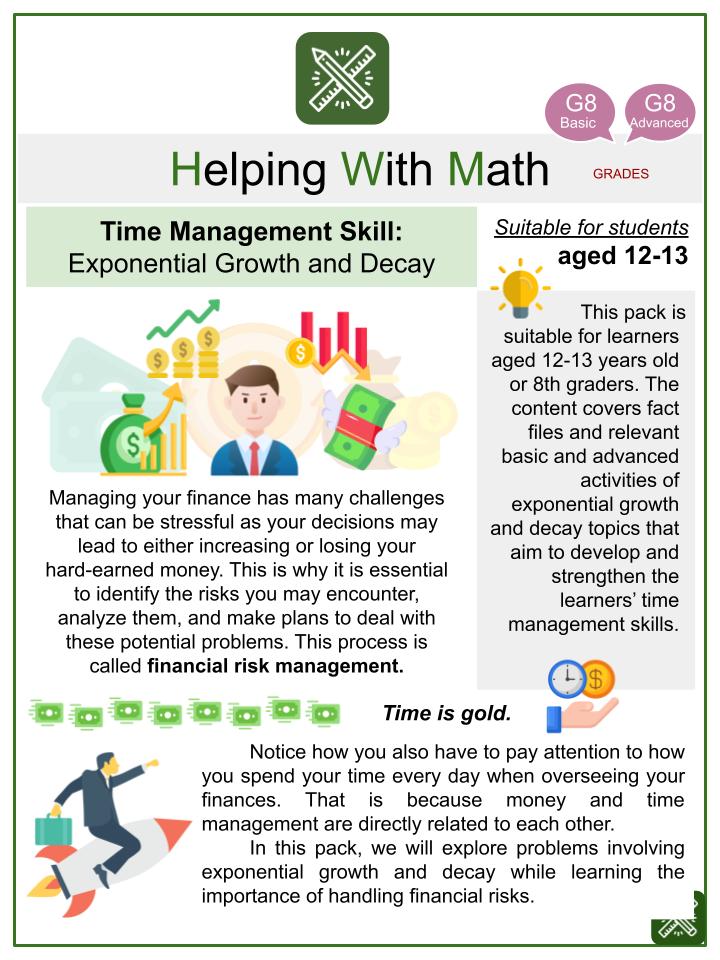Age 12-14 Math Worksheets
In this section, you can view all of our math worksheets and resources that are suitable for 12 to 14-year-olds.
We add dozens of new worksheets and materials for math teachers and homeschool parents every month. Below are the latest age 12-14 worksheets added to the site.
12-14 Years Of Age Math Learning Objectives & Standards:
- Mathematics lessons from age 12 to 14 focus on college level preparation. It is expected that in this pre-college age bracket, math discussions are more complex and more abstract. Learners have to deal with radical expressions that involve rational exponents unlike in the previous age brackets where radical expressions are concentrated only with integral exponents. They will also go deeper with rational and irrational numbers by exploring their properties. In addition, they are expected to learn the concepts of complex numbers: its definition, operations, and application of conjugates to solve complex number-related problems. Learners also apply the meaning of Fundamental Theorem of Algebra and polynomial identities to look for the solution of a particular quadratic expression/equation.
- In this age cluster, topics pertaining to Algebra mainly concentrate on polynomials, functions, equations, and inequalities. Here, learners are using their previous knowledge of algebraic expressions to find the sum, difference, product, and quotient of two or more polynomials. Theorems just like Remainder Theorem, Factor Theorem, Rational Root Theorem, and Binomial Theorem are being given more emphasis to solve for the roots of polynomials. Learners explore different mathematical strategies to solve for the zeros of quadratic equations — these include factoring, completing the square, and quadratic formula. They also expand their knowledge and understanding of equations and inequalities by simultaneously solving linear and quadratic equations/inequalities.
- In dealing with functions, learners are expected to learn how to evaluate and generate functions. In fact, the focal point of the discussions lie on the application of functions in real-life settings. The input-output relationship has to be defined using a functional model and to represent the values using graph and table. Exploration of different types of functions such as piecewise functions, absolute value functions, polynomial functions, rational functions, exponential functions, logarithmic functions, linear functions, and inverse functions are given more integral emphasis.
- Learners will now welcome the world of trigonometry by learning its basic concepts. Initially, they will get involved with another unit of angle measurement aside from the degree which is the radian measure. As a starter pack, age 12-14 learners will learn about unit circle, special triangles, right triangles, the six trigonometric ratios, and the different laws — Laws of Sines and Cosines. They will also prove and derive trigonometric identities and will use some trigonometric concepts to provide proof of triangle similarities and congruences.
- In Geometry, learners will concentrate not on triangles and quadrilaterals anymore but in circles. First, they need to orient themselves with the different definitions, corollaries, axioms, and theorems related to angles and segments of a circle. Also, arc length and area of the sector are given emphasis. On a more advanced level, learners will now begin their journey of conic sections — mainly about the equation of the circle and parabola. They will be asked to derive the center of the circle as well as the length of the radius given the standard form of the equation and vice versa. Moreover, they will strengthen their understanding of parallel and perpendicular lines, ratios of segments, and distance formula to prove some properties of a given geometric figure.
- Last but definitely not the least, learners of this age bracket will crystallize their understanding of basic statistical concepts by applying it in the field of Inferential Statistics. These learned basic concepts such as dot plots, histogram, frequency table, measures of central tendency, variability, population and sample are to be applied to research writing. Learners are expected to conduct surveys, mini-research studies, etc to make use of these concepts in conducting hypothesis testing and significant difference. Last, learners will make use of their knowledge of permutation and combination to solve real-life problems. The concepts of probability will be further applied in dealing with independent events, conditional probability, and compound events.



















